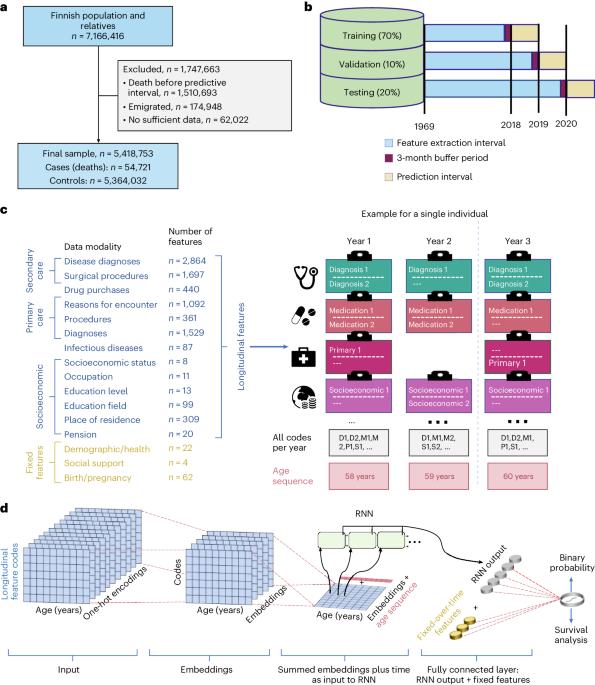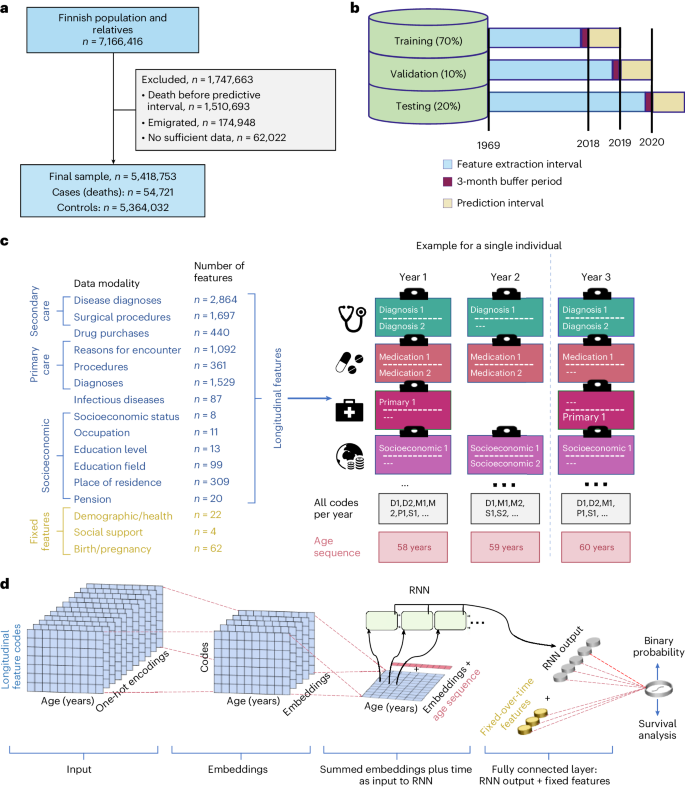Deep learning-based prediction of one-year mortality in Finland is an accurate but unfair aging marker
IF 17
Q1 CELL BIOLOGY
引用次数: 0
Abstract
Short-term mortality risk, which is indicative of individual frailty, serves as a marker for aging. Previous age clocks focused on predicting either chronological age or longer-term mortality. Aging clocks predicting short-term mortality are lacking and their algorithmic fairness remains unexamined. We developed a deep learning model to predict 1-year mortality using nationwide longitudinal data from the Finnish population (FinRegistry; n = 5.4 million), incorporating more than 8,000 features spanning up to 50 years. We achieved an area under the curve (AUC) of 0.944, outperforming a baseline model that included only age and sex (AUC = 0.897). The model generalized well to different causes of death (AUC > 0.800 for 45 of 50 causes), including coronavirus disease 2019, which was absent in the training data. Performance varied among demographics, with young females exhibiting the best and older males the worst results. Extensive prediction fairness analyses highlighted disparities among disadvantaged groups, posing challenges to equitable integration into public health interventions. Our model accurately identified short-term mortality risk, potentially serving as a population-wide aging marker. Here the authors show that deep learning accurately predicts one-year mortality using nationwide Finnish data. Despite robust performance and potential as an aging marker, fairness analyses reveal prediction disparities, urging cautious integration into public health.


基于深度学习的芬兰一年死亡率预测是一个准确但不公平的老龄化标志。
短期死亡风险表明个人体质虚弱,是衰老的标志。以前的年龄钟主要预测计时年龄或长期死亡率。目前还缺乏预测短期死亡率的年龄钟,其算法的公平性也尚未得到研究。我们开发了一个深度学习模型,利用芬兰全国人口纵向数据(FinRegistry;n = 540 万)预测 1 年死亡率,其中包含 8000 多个特征,时间跨度长达 50 年。我们的曲线下面积(AUC)达到了 0.944,优于仅包含年龄和性别的基线模型(AUC = 0.897)。该模型能很好地概括不同的死因(50 种死因中有 45 种的 AUC > 0.800),包括训练数据中没有的 2019 年冠状病毒疾病。不同人群的预测结果各不相同,年轻女性的预测结果最好,而老年男性的预测结果最差。广泛的预测公平性分析凸显了弱势群体之间的差异,这给公平纳入公共卫生干预措施带来了挑战。我们的模型能准确识别短期死亡风险,有可能成为全人口老龄化的标志。
本文章由计算机程序翻译,如有差异,请以英文原文为准。
求助全文
约1分钟内获得全文
求助全文

 求助内容:
求助内容: 应助结果提醒方式:
应助结果提醒方式:


